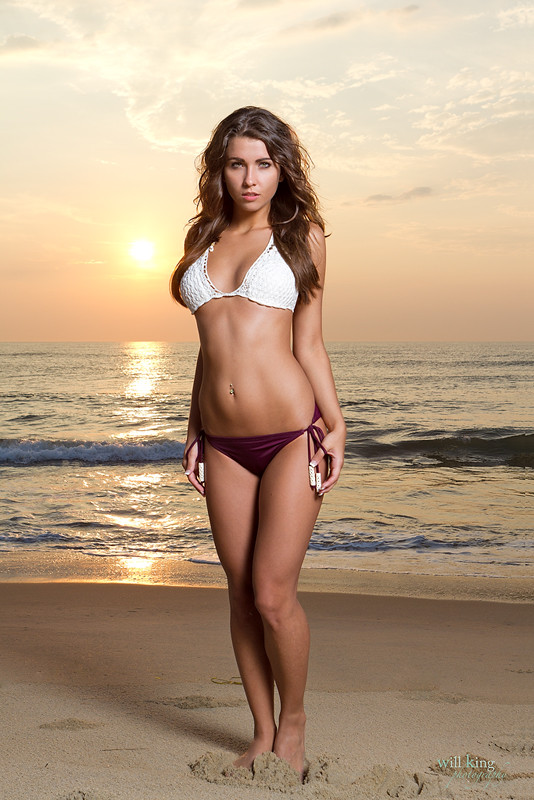Here's an example:
As the sun gets high in the sky and the light from the sun gets brighter, you'll have to increase the power of your flash. Why? Before we answer that, let's talk about just exposing for the ambient or available light. To be able to get the proper exposure of a bright sky, or take it even more dramatic and underexpose the bright sky, your camera has to be able to take in less light in a shorter amount of time. To be able to do this, you'll want your camera's settings to be at the lowest ISO possible, have a small aperture, and a fast shutter speed. The shutter speed has to be fast but it can't be faster than the fastest sync speed that your camera can sync to a flash. This is usually 1/200 -1/250.
I start out by getting my camera's exposure set to achieve the look I want. At this point, I'm just concerned with the available light, not using flash yet. Once I get my base exposure, I'll get the subject in place and introduce flash. I don't use a light meter so I just take a best guess at the flash power, take a test shot and view my results on the back of my camera. I may have to make 1-2 more adjustments in the flash power but at this point I'm off and running.
Here's another expample:
I used a Canon EOS 7D with the Canon 16-35mm f/2.8L II for this shot. My camera exposure settings were f/11 / ISO250 / 1/250.
I lit the subject with an Einstein640 inside of a beauty dish to camera left. The power on the flash was set to somewhere near half power.
Here's another shot from the same day.
As the sun gets higher and the light it produces gets brighter, you'll have to change your camera's exposure settings to reduce the amount of light coming in. Since I was already at the lowest ISO and I was stuck with a 1/250 shutter speed (max sync speed for the 7D), I simply stopped down my aperture to f/18. The thing to keep in mind is, as you change the aperture on your camera, not only will that affect the ambient exposure, it will also affect the flash exposure. For this shot, I had to increase the power on the flash to almost full power.
So "overpowering the sun" means fighting light with light. Just make sure you bring a lot of light!




